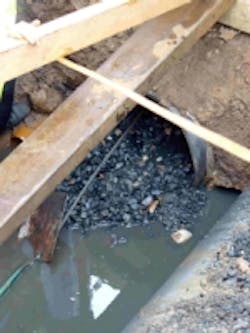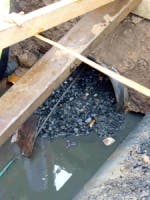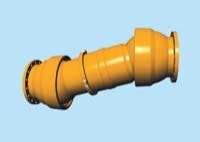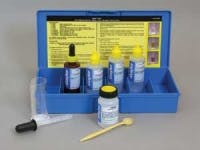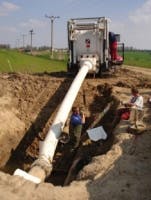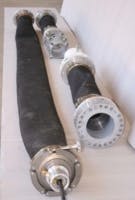Quick-curing procedure for woven fabric hose rehabilitation of water main
By Holger Turloff
A new DN 500 GG wastewater pressure main is to be rehabilitated for the present building project in Berlin-Lichtenberg, commissioned by Berliner Wasserbetriebe. Due to the city centre location, a trenchless alternative was chosen. Whilst maintaining the supply cross-section of the old pipe, the woven fabric hose variant in starline® HPL- S® (High Pressure Liner -- Sewer) procedure was chosen in combination with starline®EXPRESS curing technology. starline®EXPRESS opens up new perspectives. Pressure pipelines for all means, in large individual lengths of up to 600m and at operating pressures of up to 30 bar, can be rehabilitated and ready to use in just one working day. This new method is a quantum leap in trenchless rehabilitation. As attested by the DGVW (German Technical and Scientific Association for Gas and Water), the life span of this process is greater than 50 years. Due to the very minor civil engineering services, 90% of CO2 emissions otherwise accumulating will be avoided. A completely newly developed curing technology will be used for the curing of the woven fabric hose.
The following are the fundamental procedural steps of this combination process: - High-pressure water cleaning up to 1500 bar - Sandblast cleaning - TV Inspection and pipe calibration - Woven fabric hose rehabilitation in starline® HPL-S procedure - Curing in starline®EXPRESS procedure. The pipeline to be rehabilitated will be worked on and rehabilitated in two segments (95m and 264m). In the preliminary stages, the construction trenches for cleaning and the woven fabric hose fitting will be situated alongside the wastewater pressure main and the pipeline will be detached and emptied.
An initial TV inspection including video recording of the whole pipeline will take place in order to obtain an initial overview of the condition of the pipeline and also in order to pinpoint any possible obstacles preventing cleaning and rehabilitation. During the subsequent cleaning, by means of high-pressure water, all residues such as fats, faeces, incrustations etc will be removed at pressures of up to 1500 bar.
In the process, the cleaning water that accumulates will flow into the local sewer system after sampling. The accumulated sediments will be competently removed and disposed of.
Subsequently, the necessary sandblast cleaning guarantees that the inner surface of the pipe is metallically pure and consequently there is an optimal basis for adherence later on with the woven fabric hose yet to be constructed.
The results of the individual cleaning procedures will be assessed and recorded on TV inspections. Before construction of the woven fabric hose, the whole pipeline will be surveyed by means of a self-propelled optical pipe calibration system from the inside in order to determine the exact inside diameter of the pipe at all points of the pipeline. As a result, it is guaranteed that the appropriate and therefore correctly dimensioned woven fabric hose is being used. The subsequent rehabilitation of the woven fabric hose with the starline®HPL-S procedure is subdivided into several work processes. The hose will be soaked with the dual component adhesive and the adhesive will be evenly spread over the whole length of the hose. For this purpose, whilst the soaked hose is being rolled up on the pressure drum it will be simultaneously pulled through a specific nip. After that, one end of the woven fabric hose is attached to the reverse head and the "filled" pressure drum is placed in to the starting pit. By means of air pressure and an inlet funnel that is mounted on to the pipeline, the woven fabric hose will then be installed into the pipeline segment that is to be rehabilitated at a specific reversion pressure and specific speed into the pipeline segment.
Our starline®EXPRESS procedure is applied to the subsequently accelerated curing of the adhesive soaked woven fabric hose. For this purpose, special hose locks will be mounted at the destination point of the rehabilitation section. The woven fabric hose, under internal pressure, will be temporarily closed and the end of the hose will be attached in such a way that the pressure drum can be disconnected and transported to another rehabilitation segment for further rehabilitation. The radiation source will be placed into the rehabilitation section through the hose locks over the retention belt.
After the successful pressure test, the cleaned branches will be opened trenchlessly by a grinding robot and the TV approval inspection will be carried out.
The pipeline segments will then be attached to the available pipeline network and put into service and the construction trenches will be closed.
June 2009
###
